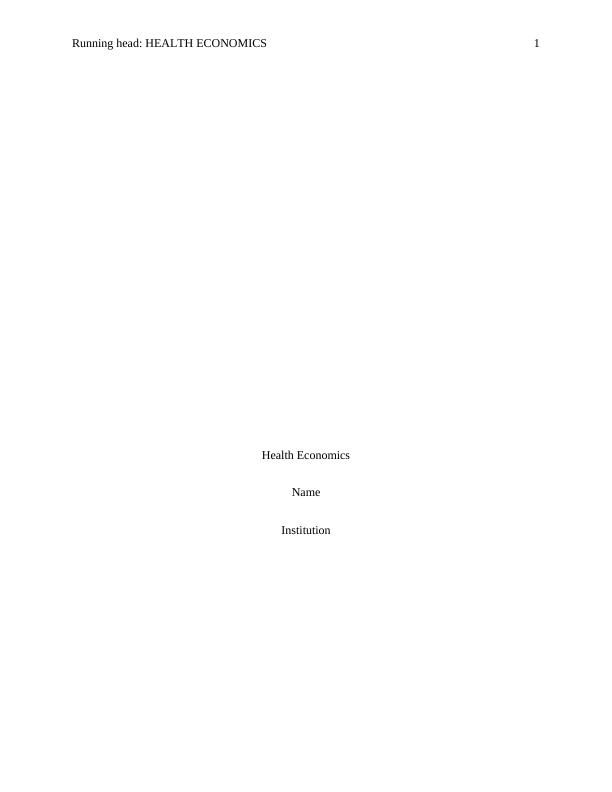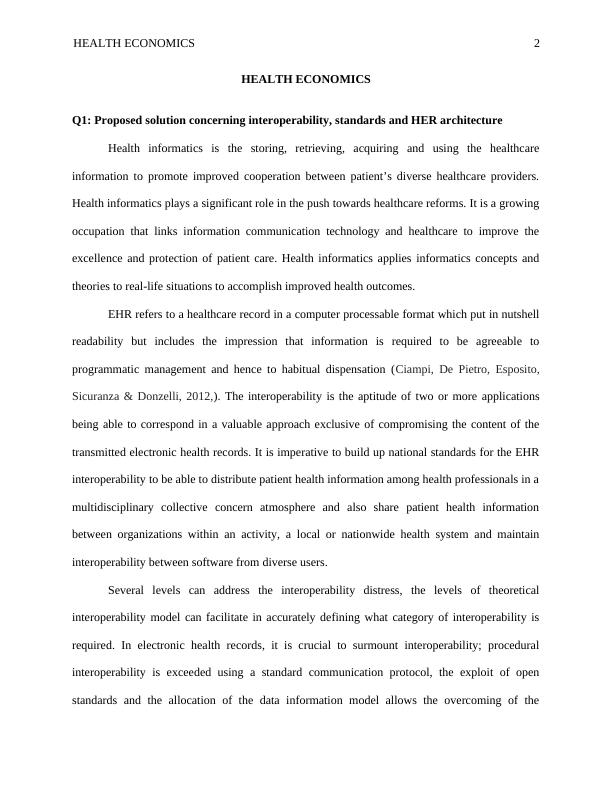Health Economics
Introduction to Health Informatics Module 3>Topic 12.1 Project Management What is a project “A unique set of inter-related activities, with defined start and finish times, designed to achieve common objectives” Australian Institute of Project Management (AIPM) “A project is a temporary endeavour with a defined beginning and end.” Project Management Institute (PMI) Key dimensions of a project High Project Failure 18-40% – Standish Group Report (1994- 2009) Why Project Management is important? Project Management Standards PMI’s PMBOK OGC’s PRINCE2 BS6079 (British Standards) PMI (Project Management Institute, US) OGC (Office of Government Commerce, UK) PMBOK (PMI) – Stages of PM Initiation Planning Execution Monitoring and controlling Closing/Completion PMBOK (PMI) – 9 Knowledge Areas PRINCE2 (OGC) – 7 Processes British Standard (BS6079) British Standard (BS6079) uses a ten stage approach to project management. This standard covers projects from inception to decommissioning While this standard of project management is used mostly for large engineering projects, the ten points fully explain project management BS6079 Concept Feasibility Authorisation Implementation Procurement Control/accountability reviews Completion and handover Operation – integration of project Close down Termination and disposal of assets Project management in healthcare To develop new services To improve existing service standard and quality To implement new
Added on 2023-06-11
About This Document
Health Economics
Introduction to Health Informatics Module 3>Topic 12.1 Project Management What is a project “A unique set of inter-related activities, with defined start and finish times, designed to achieve common objectives” Australian Institute of Project Management (AIPM) “A project is a temporary endeavour with a defined beginning and end.” Project Management Institute (PMI) Key dimensions of a project High Project Failure 18-40% – Standish Group Report (1994- 2009) Why Project Management is important? Project Management Standards PMI’s PMBOK OGC’s PRINCE2 BS6079 (British Standards) PMI (Project Management Institute, US) OGC (Office of Government Commerce, UK) PMBOK (PMI) – Stages of PM Initiation Planning Execution Monitoring and controlling Closing/Completion PMBOK (PMI) – 9 Knowledge Areas PRINCE2 (OGC) – 7 Processes British Standard (BS6079) British Standard (BS6079) uses a ten stage approach to project management. This standard covers projects from inception to decommissioning While this standard of project management is used mostly for large engineering projects, the ten points fully explain project management BS6079 Concept Feasibility Authorisation Implementation Procurement Control/accountability reviews Completion and handover Operation – integration of project Close down Termination and disposal of assets Project management in healthcare To develop new services To improve existing service standard and quality To implement new
Added on 2023-06-11
End of preview
Want to access all the pages? Upload your documents or become a member.



